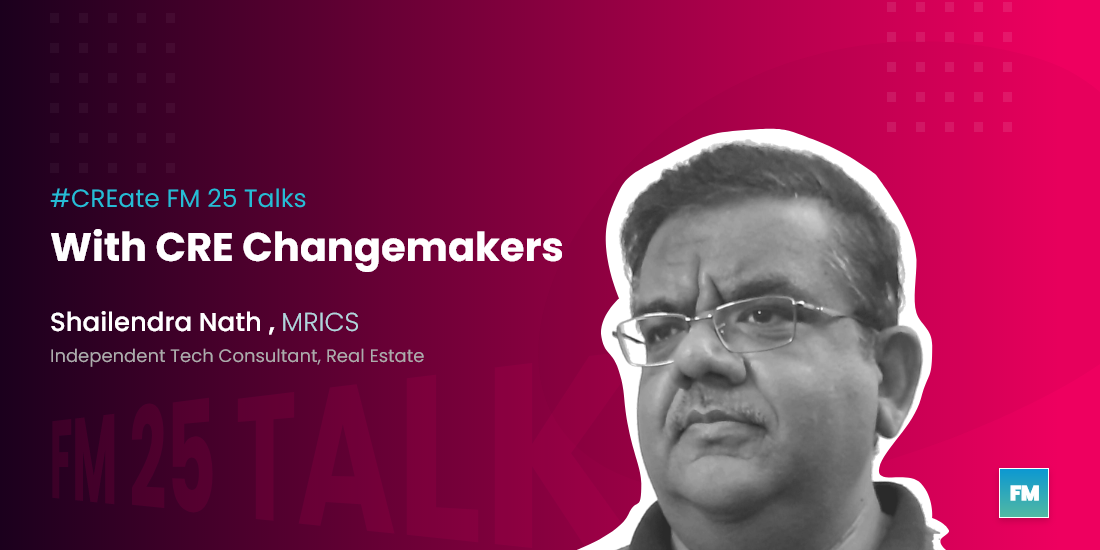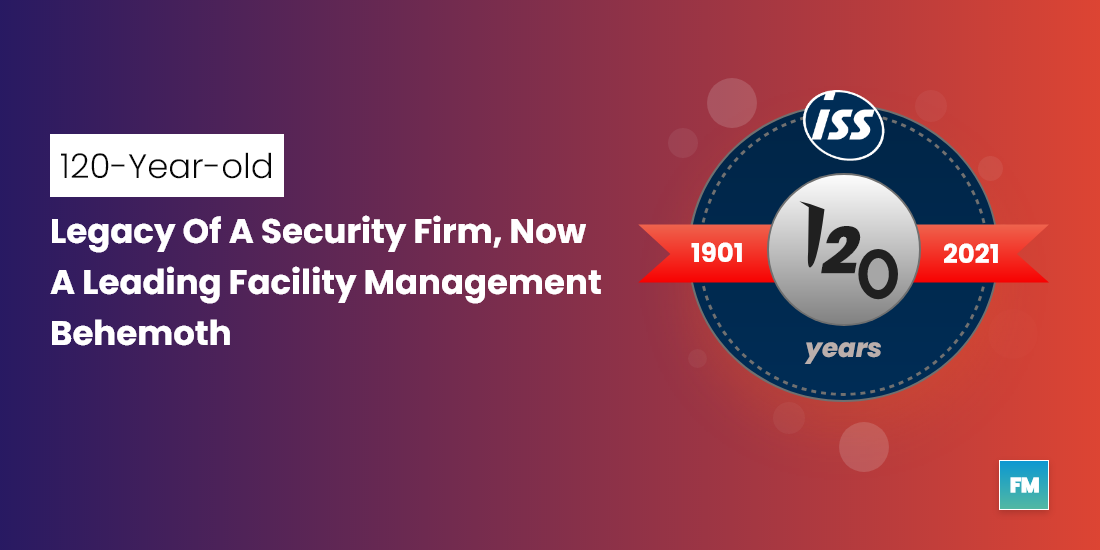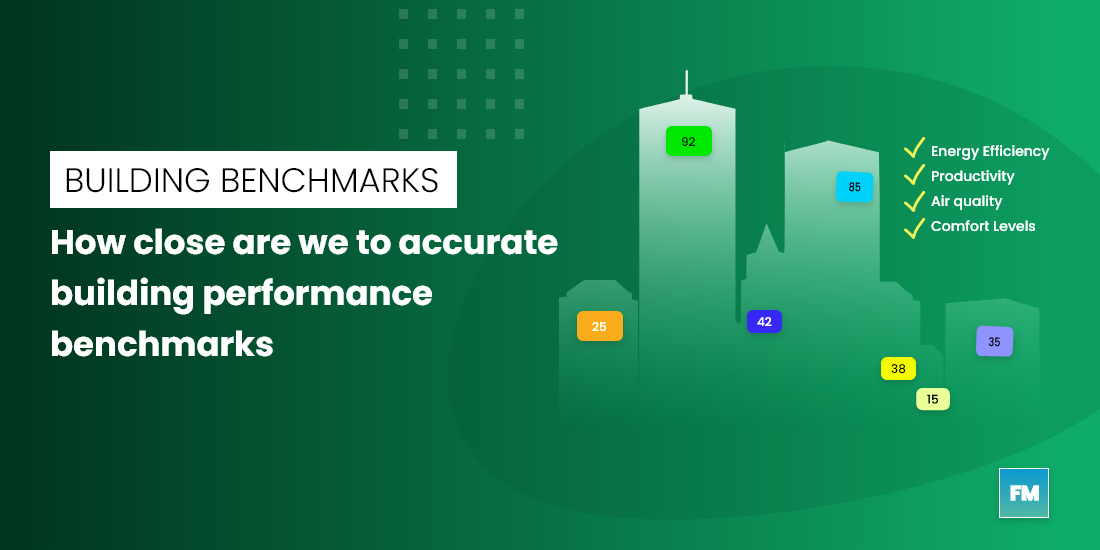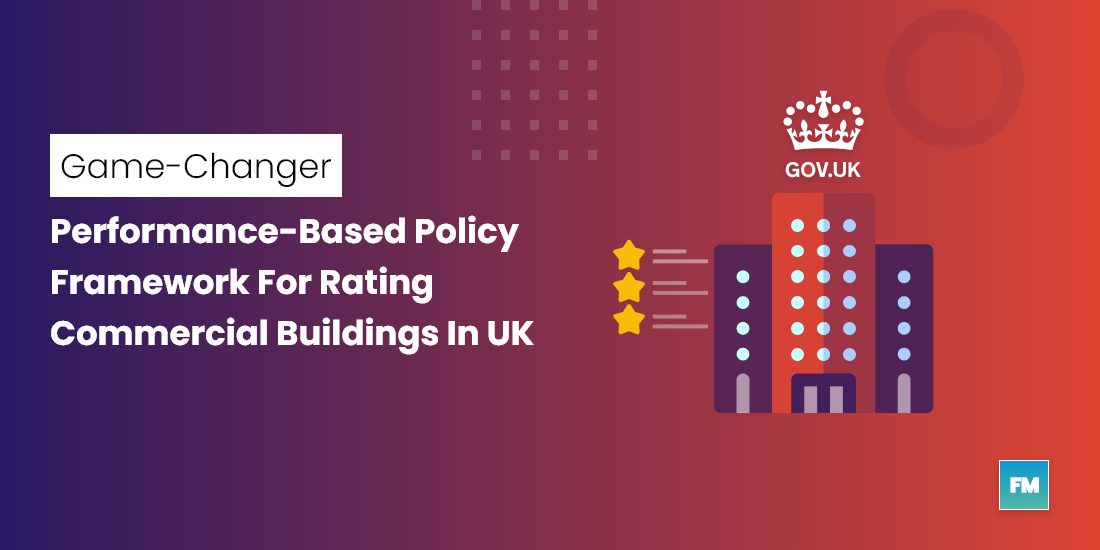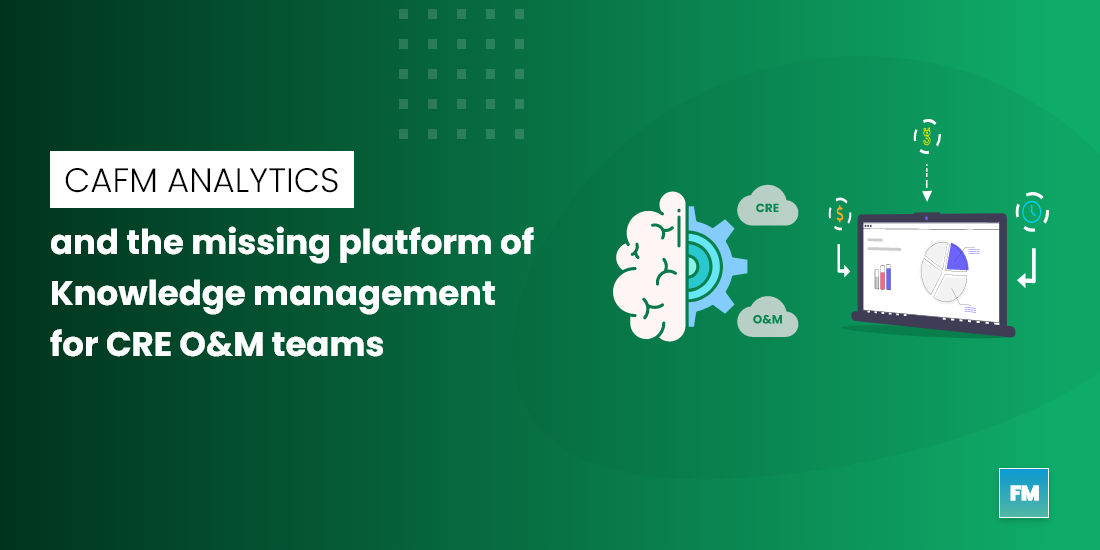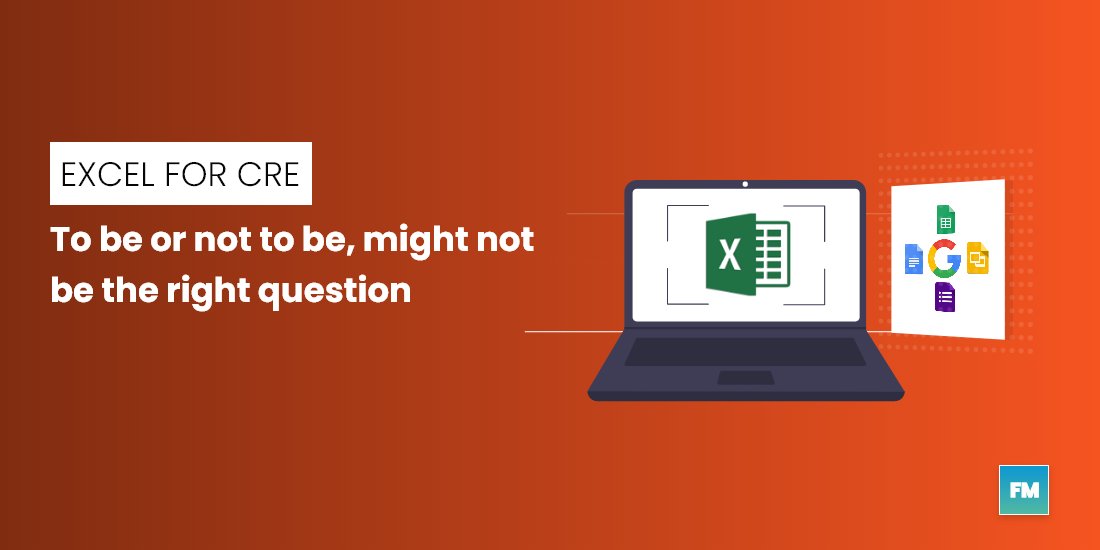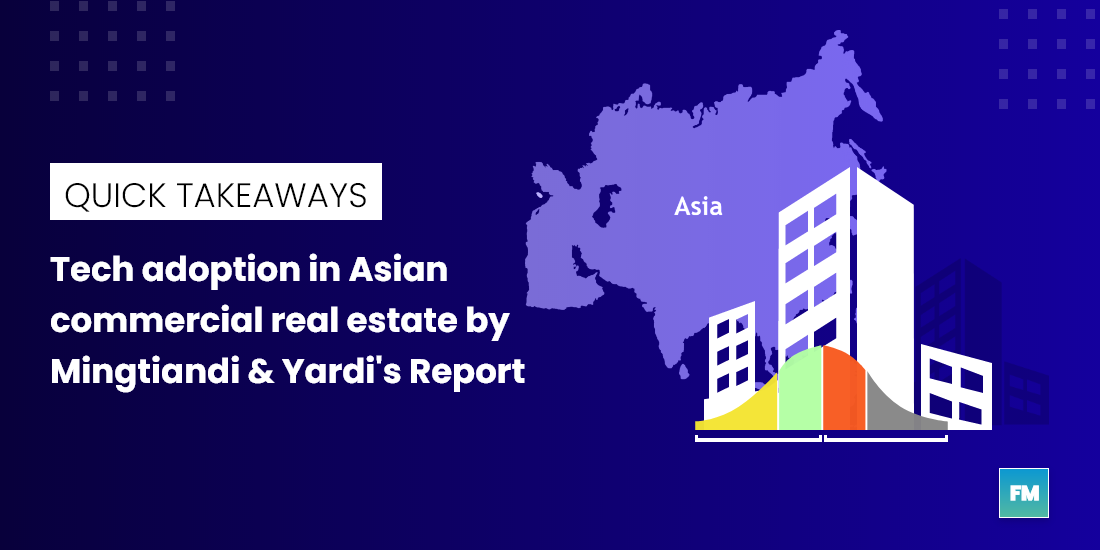#CREate FM 25 Talks is an interview series with CRE change-makers and Doers. With this, we intend to bring out first-hand experiences and best practices on digital transformation, energy management, and sustainability initiatives from industry leaders.
Brief about Shailendra Nath,
A real estate professional with over 2 decades of experience spanning across industry segments, corporates, developers & consulting. His strength lies in the area of facilities management, operations, client management, contract management, and ESG. He has always been passionate about technology and this drives his current interest in Proptech. Throughout the career, he has deployed various strategic projects across different geographies and the Project scopes ranged from technological solutions, supply chain, and organizational structuring initiatives.
Q.1 Can you tell us about your current role or the projects you are handling?
Currently, I am involved in a consulting assignment for a US-headquartered tech firm. The project involves a review of their global real estate operations and contracting environment and support development of a new globally aligned scope on principles of Vested®
So one of the focus objectives of this assignment is to help them streamline and standardize the Scope that they are operating or the way they operate the real estate piece across continents. The second part is to explore opportunities within their operations as to how they can enhance their outsourcing partnerships and thus bring in more value to the organization.
Q.2 Everyone wants to be a part of the change but in this entire process, the thin line between ‘business need’ and ‘want’ is getting blurred. How can a facility manager ensure that particular technology or platform is ideal for his facility?
I would say the FM industry is such that, while we equally manage a lot of costs and risks both, the spending on every real estate resource (staff, O&M teams) is always under pressure and that also implies that we are not always working with the most skilled people on the ground.
“Any tech solution or software can work or will be successful ONLY if the last man on the ground is able to use it and is capable of using it.”
So the first pieces that I think organizations need to figure out whether they are ready for it and before calculating the cost of Technology there may be an impact in terms of the quality of resources that they need to get on the ground to be able to utilize it fruitfully with an appropriate awareness of it.
Coming on to the next aspect in terms of requirements. There is a very diverse range of products or solutions that are available in the market having said that it is very important to first have an inside look as to what is really important for you.
Two different organizations may be in the same business area, which could be the ITeS sector or a banking sector or whatsoever. The business requirements may be different, the portfolio structuring may be different and hence the need for your technology will also be different. One solution may not be suitable for every business or every portfolio. You have to be clear as to what you’re really looking for and then get into the product selection mode.
From there it comes to I think one of the biggest hitches of spending cost and a solution. So today most of the service providers or solution providers do have a SaaS model. That’s a really desirable way to go forward. So that you are not locking in the capital, you can be flexible so that if at all your first trial fails, it’s not that you have sunk in too much or you just get stuck to something for life, right?
So I think these are the first few initial steps that one really needs to think of before even getting into a tech selection or implementation.
Q.3 Whether it is a point solution or the platform? Arriving at the ROI calculation could be difficult. So while selecting such products besides cost what factors should be considered to decide the Impact of the solution?
So outside of cost, as I mentioned earlier, your product selection should keep into consideration your business requirement. Because each Product suite that I have come across tends to have a weak point and plus point/ general feature. Prioritize the business requirements and needs!!
For Example, If you’re in an organization where cafeteria management is very important. Then please select a portal or a solution that is very strong in cafeteria management. If you have a lot of meeting rooms to manage then go in for good hoteling software.
“It’s neither essential nor desirable to get yourself stuck into buying a large product suite that has numerous features. Most of them won’t work as great as a specialized one.”
Focus on your important business needs, your functional day-to-day needs, and choose a solution based on that. If you say that one platform has 100 features and the other one has 120 features another has 150 features and you try to make a call on that then frankly. The reality is that you may never use all those features!
And the Top of that the real feature that you need may not be the strongest point of that platform. So you have already spent the time & resources and you’re not even able to do the most important job which your business needs the support.
It may or may not be a niche solution as there are larger platforms with multiple features, but each of them has a different Focus. Each of them has a different strong point why you should choose the product which is where the strong point is relevant to your needs.
If the requirement is very niche then you can consider getting into a custom solution, but it has to be done with a lot of thought and a lot of introspection. It cannot be an overnight job that you can roll out a solution within a week.
Q.4 I am glad that you touch upon the topic of Build Vs Buy, So if we segregate the entire value chain of building analytics solutions from data collection to providing insights. Which part an FM should build on or create differentiation and which to buy from the open market?
Unless you have a very niche solution expectation that is not available in the market that’s when you should go for a captive development. Even then I would suggest working with a solution partner because one task is developing the solution and the second Is maintaining the solution. So even if you develop something over time the solution will always require maintenance, modifications over the course of its lifetime, and as a one-time development, you will not be able to do that.
But when you work with this tech partner, make sure that you have the right partner in place who doesn’t hold you to ransom later and helps you build the platform as time goes by.
However, I would say almost 99% of cases. I would prefer to go for a ready-made solution because
A) Those solutions have been developed over a period of time B) They are matured with the experience of every user who’s using that platform. So it’s not just your experience or your knowledge, which has been used to develop but from every user’s experience, and feedback is used to modify it further.
It’s always desirable to go for a ready-made solution. Most of the inbuilt solutions in my past organizations, I have seen them struggle because when you spend a certain amount of money there are always some afterthoughts that come up as the solution gets rolled out within your organization as well. But then every update costs you money if it’s not in the short term then in the long term you may not have access to the developer or the development process which was used in creating that solution and you end up with an obsolete product, which is no more useful.
Q. 5 Let’s move to the next question which is also around, cost-effectiveness. Instead of the current cost-plus model do you think performance-based contracts can help FM improve its operational margins?
Performance-based contracts are certainly desirable, however, they cannot be a one-way street. If a client is expecting innovation, the cost of these has to be thought through as the FM partner will also need returns on their investment to implement such initiatives. The outcome expectation also needs to be balanced.
For example, if a contact says every year the FM has to reduce 2% of energy cost and has an incentive/penalty linked for that then he will do a 2% reduction per year only even if it’s very possible to do a 6% or 8% reduction in the first year. Upfront implementation would only benefit the client and expose the FM to penalties for the remaining term of the contract. Hence, the need to balance performance measurement.
“It’s about the nature of the Contracting where the client also needs to be sensible about what they are looking for in the contract. I think the Contracting has to be done as a way to a means rather than trying to set up a penalty system.”
If you’re only talking of penalizing then you’ll not get the best results out of your contract.
There are leaders (both clients and FM firms) in the market who are getting into those kinds of contracts where they follow a partnership-based approach. They understand what can be achieved and what can not be achieved and wherever there are opportunities for joint investment, they collaborate also,
Let’s say if you are targeting a 10% energy reduction then there will be Capital Investments that need to be made and there has to be clarity as to how that will be done and how the investment load and the return on investment should be delivered.
If it’s a cost-plus contract the cost would have to be borne by the client. If it is a performance-based contract where certain targets have been agreed on and certain costs have been agreed on to reach those targets then the cost will be borne based on that model, which is agreed. Could either be the service provider or the client whatever the contract conditions say.
There was a time when we were all working on Excel sheets and tally came as a game-changer, which is today moved on to ERPs. I don’t know how many of the organizations when they have rolled out those financial ERPs really been able to justify their RoI?
Ultimately, it’s not about the cost, It’s about the control of information and enabling decision-making based on the information that is available. Accurately captured data will enable correct information which in turn supports timely decision making for the RE Manager and also the CXO’s.
